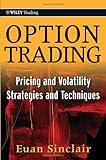What is really a normal volatility level for the S&P 500? This is a very valuable question to address when thinking about buying or selling options. If implied volatility is low compared to historical volatility levels then you might think about purchasing options. If implied volatility is high then you might think about selling options. There is not a perfectly right answer in this realm, but one place to start is to look at recent historical volatilities versus current implied volatilities:
The recent rolling historical volatility graph shows a 10 day annualized low of 3.85%! to a high of 20.94%. It has been my feeling that these volatility levels have been fairly low considering everything that is going on with global economics and global politics, but looking at this chart does not give a lot of support to that hypothesis. One thing that you will note is that the implied volatility level, Cyan line, has been significantly higher than the realized levels shown. This is indicative that you would earn a positive risk premium in selling one month options over this time period. If you sold calls and puts at the money and delta hedged the options to a delta neutral position, then you should have captured the implied volatility to realized volatility gap.
Getting back to the original topic, how can we make a judgment on whether current volatility levels are high or low? I like to look at volatility cones. In the volatility cone below, I plotted annualized volatility distributions going back to January 2001. The way this works is simple – I start off calculating 10 day volatility for every 10 day period between January 2001 and May 2011, then look at the distribution of those annualized results. I move on to 20 day volatility and do the same until I finish at 360 day volatility. What results is a cone shape which shows that annualized volatility ranges can be significantly low or high over 10 day time periods, but the ranges get smaller as you move out to 1 year time periods.
The numbers that are plotted below the green line represent the 50th percentiles of the distributions. For 10 day historical volatility we see a 50th percentile of 15.78%. For a 200 day volatility we see a 50th percentile of 18.69%. Notice that these are not averages, but medians. The average would be brought higher by the skewed distribution.
So how would I interpret these specific results? Looking at the last 10 years of S&P data and specifically at the 100 day vol cone level, I would say that the current 100 day realized of 11.69% is on the low side of historical volatility levels.
Option Trading: Pricing and Volatility Strategies and Techniques (Wiley Trading)
- ISBN13: 9780470497104
- Condition: New
- Notes: BRAND NEW FROM PUBLISHER! BUY WITH CONFIDENCE, Over one million books sold! 98% Positive feedback. Compare our books, prices and service to the competition. 100% Satisfaction Guaranteed
An A to Z options trading guide for the new millennium and the new economy
Written by professional trader and quantitative analyst Euan Sinclair, Option Trading is a comprehensive guide to this discipline covering everything from historical background, contract types, and market structure to volatility measurement, forecasting, and hedging techniques.
This comprehensive guide presents the detail and practical information that professional option traders need, whether they’re using options to hedge, manage money, arbitrage, or engage in structured finance deals. It contains information essential to anyone in this field, including option pricing and price forecasting, the Greeks, implied volatility, volatility measurement and forecasting, and specific option strategies.
- Explains how to break down a typical position, and repair positions
- Other titles by Sinclair: Volatility Trading
- Addresses the various concerns of the professional options trader
Option trading will continue to be an important part of the financial landscape. This book will show you how to make the most of these profitable products, no matter what the market does.






